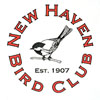Report for First Wednesday Walk, April 5, 2017, Milford Point. Leader, Steve Spector
On a calm, relatively warm (beginning at 43 degrees and rising to 49), 20 birders gathered at the Connecticut Audubon Coastal Center at 8:00 AM, about 49 minutes after high tide. Because the main sandbar is split in half at high tide, we first observed the marsh from the parking lot platform. Good numbers of ducks were around, including Green-winged Teal, Gadwall, Black Duck, Mallard, American Wigeon, Red-breasted Merganser, Hooded Merganser, Bufflehead, and a dozen Northern Shovelers. Brant (the most numerous bird), Canada Goose, and Mute Swan were also seen, as well as waders (Great Blue Heron, Great & Snowy Egret). A single Osprey was on the platform next to the CACC, but a pair were nest building on another platform further north. Tucked into the SW corner of the marsh were, as is their habit, 4 recently arrived Greater Yellowlegs. Overhead, we were treated to a constant flow of returning Tree Swallows. After about 50 minutes we began walking out to the main sandbar (watched by a juvenile Cooper’s Hawk perched on a small tree near the path between Smith’s Point Road and the viewing platform). As we doing an initial scan of the main sandbar from the platform,Tina Green and Frank Mantlik noticed a shape, and suddenly Frank announced, “Short-eared Owl,” as one flew up from the grassy area to the west. Great looks were had by all. We moved slowly onto the shore, and heard, and then saw well, the breeding birds (Piping Plover, Killdeer, and American Oystercatcher), all exhibiting courting and territory-establishing behavior and vocalization. Offshore there were no rafts of ducks around, but we saw Common Goldeneye, Long-tailed Duck, Horned Grebe, Red-throated Loon, and many Common Loons (at least 35). On the main sandbar, where earlier there had been a pair of Horned Lark, we found 4 Black-bellied Plover, while Sanderling and Dunlin formed foraging flocks of at least 200 each, at times merging into spectacular masses of fast-moving shorebirds. As we were leaving Frank Mantlik again found another treat, a silvery-gray Iceland Gull that was mixed in with a small number of other gulls. Al in all, we totaled 56 species, and at the end of our trip the sun came out. Steve Spector
charsjs@sbcglobal.net
